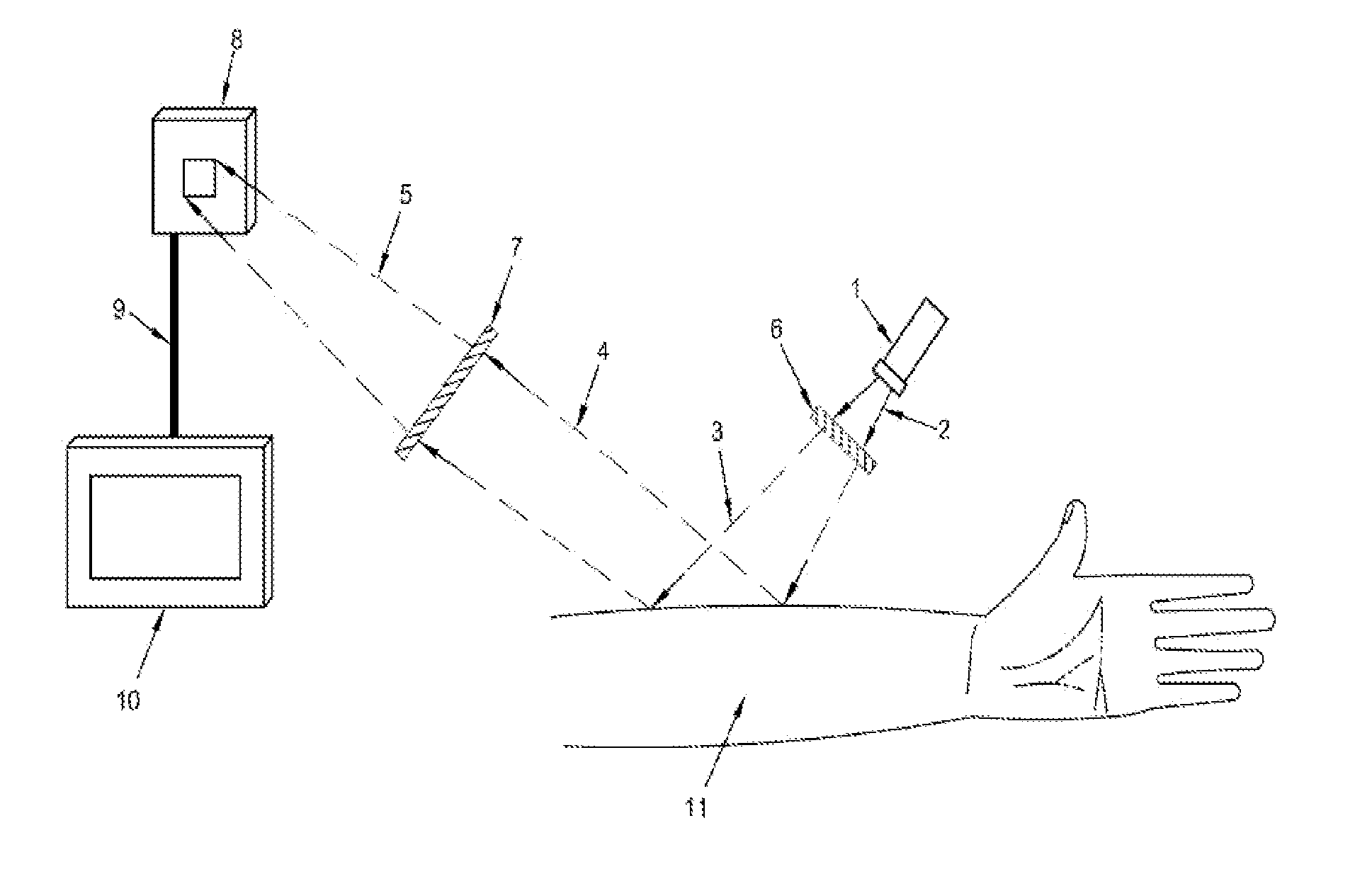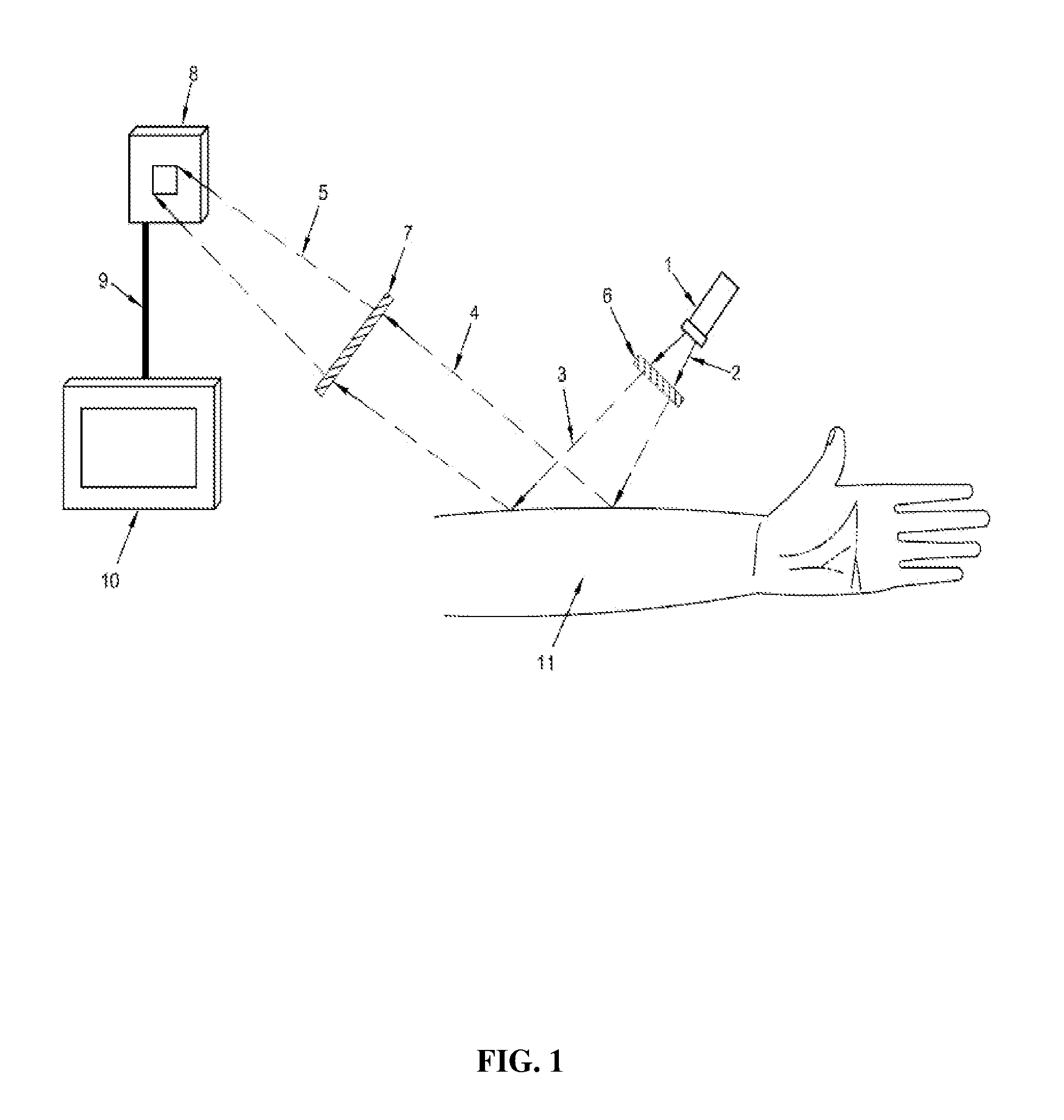Subcutanous Blood Vessels Imaging System
a subcutaneous blood vessel and imaging system technology, applied in the field of medical imaging systems, can solve the problems of large number, large number, large field of view, relative slow frame rate, etc., and achieve the effect of clear vein presentation and increased snr (signal-to-noise ratio)
- Summary
- Abstract
- Description
- Claims
- Application Information
AI Technical Summary
Benefits of technology
Problems solved by technology
Method used
Image
Examples
Embodiment Construction
is accompanied by referring to the accompanying drawings wherein:
[0019]FIG. 1 illustrates a preferred embodiment of the present invention wherein image of anatomical structures is captured by an infrared Focal Plane Array through a pinhole focusing unit such as a Non-Redundant Array (NRA) aperture, or a Uniformly Redundant Array (URA) aperture, or a Uniformly Distributed Array (UDP) aperture and subsequently being processed and displayed on a display unit.
[0020]FIG. 2 illustrates another preferred embodiment of the present invention wherein image of anatomical structures is captured by an infrared Focal Plane Array through an infrared objective lens and subsequently being displayed on a display unit.
[0021]FIG. 3 illustrates the single pinhole selection from a multiple available pinholes to act as the aperture for the present invention.
[0022]FIG. 4 illustrates the possibility of setting the pinhole to any desired radius to act as the aperture for the present invention.
[0023]FIG. 5 il...
PUM
 Login to View More
Login to View More Abstract
Description
Claims
Application Information
 Login to View More
Login to View More - R&D
- Intellectual Property
- Life Sciences
- Materials
- Tech Scout
- Unparalleled Data Quality
- Higher Quality Content
- 60% Fewer Hallucinations
Browse by: Latest US Patents, China's latest patents, Technical Efficacy Thesaurus, Application Domain, Technology Topic, Popular Technical Reports.
© 2025 PatSnap. All rights reserved.Legal|Privacy policy|Modern Slavery Act Transparency Statement|Sitemap|About US| Contact US: help@patsnap.com



